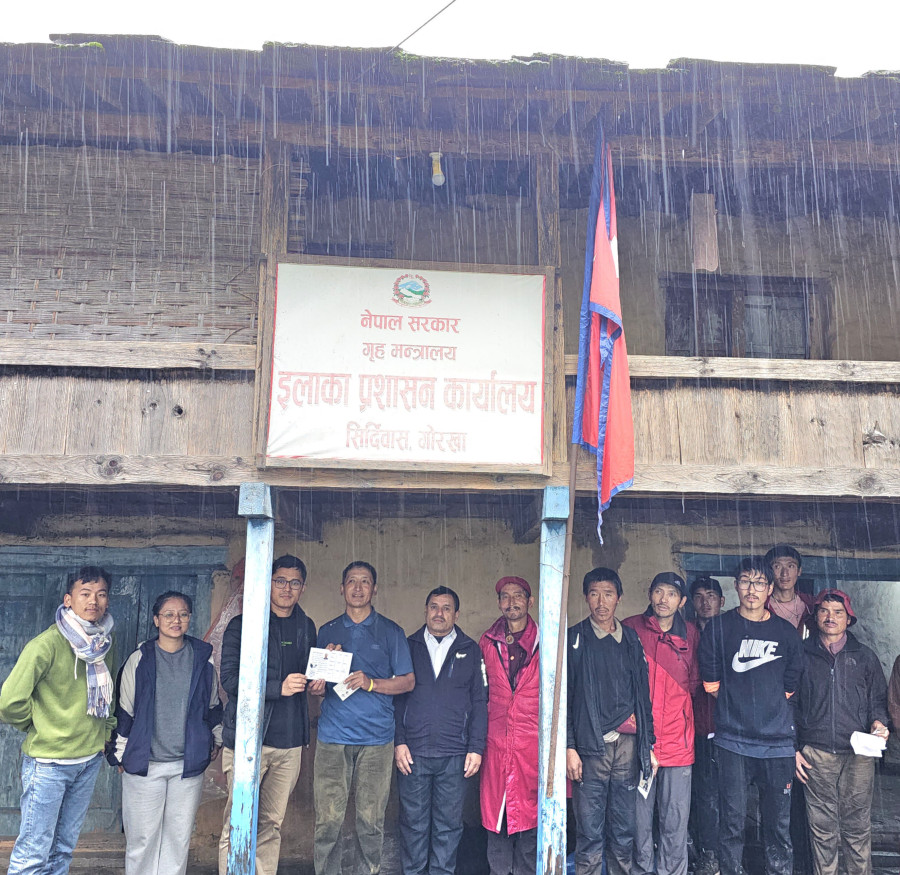Gandaki Province
Nepal-China border reopening brings joy to northern Gorkha
The Gorkha district administration started providing China entry permits to the residents of Chumnubri Rural Municipality from Wednesday onwards.
Hariram Upreti
The Gorkha District Administration Office started distributing entry permits to the residents of Chumnubri Rural Municipality to enter China from Wednesday onwards. The Nepal-China border on the northern side of the country had remained closed since Covid pandemic and was only opened two weeks ago.
There are two border crossings in north Gorkha—one in Ruila in ward 1 and the other in Nguila in ward 7—that were closed for four years during the pandemic. Even though the Chinese government opened the border two weeks ago, the residents of the border area were not allowed to cross over to Tibet without permits.
The District Administration Office has started distributing border passes from the area administration office in Philim, located in ward 3 of Chumnubri. A team led by Pushkar Rana, deputy chief district officer, reached Philim for the distribution of border passes. Rana said that passes will only be given to residents who are living near the border area.
The Chinese government allows visa-free entry only to those who live within 30 kilometres of the border.
According to Rana, 20 people on Wednesday and 33 people on Thursday received the permits. “Those eligible for the permits must come with their citizenship certificate and two passport-size photographs for verification to the area administration office,” said Rana.
According to the area administration office, the district administration office printed the permits as directed by the Ministry of Home Affairs.
The locals of Samagaun in ward 1 of Chumnubri have reached the area administration office after walking for two days to receive the border permits. Similarly, the locals of Chhekampar in ward 7 of Chumnubri have to walk for one whole day to get their permits. “The number of people visiting the area administration office will increase in the next few days,” said Rana.
According to Nima Lama, chairman of the Chumnubri Rural Municipality, the border was opened some 14 days ago, and the passes were distributed after repeated requests to the District Administration Office. The border area, however, is currently blanketed in snow, he said, which makes crossing into Tibet difficult. “Once the snow melts, those with permits will go to Tibetan markets to buy daily essentials,” said Lama. “Life will finally return to normal for the locals in the border area.”
Locals of wards 1 and 7 visit the markets in Tibet which are closer than the Nepali markets. People usually visit the Sya market which is 5 km from the border and the Jonga market around 15 km in Tibet.
Lama said that the residents of this region depend on the Tibetan market for essentials such as rice, salt, oil, and clothes, among other things.
Since the border closure, the locals had been paying thrice the market price for these products due to high transportation costs. The market price had increased exorbitantly since the cost of transportation of goods from Arughat Rural Municipality had multiplied.
“We were forced to pay Rs70 per kilogram for the transportation of consumables, and it used to take three to four days just to reach the markets in Arughat. Since the pandemic, we have faced major shortages of salt, rice, and oil,” said Tenzing Dorje, a 50-year-old man from ward 7 of Chumnubri. “We are very happy now that the border is open. Ever since I can remember, we have been dependent on the markets of Tibet because it is very difficult to reach the market on our own side due to the difficult topography.”




 31.12°C Kathmandu
31.12°C Kathmandu.jpg)








